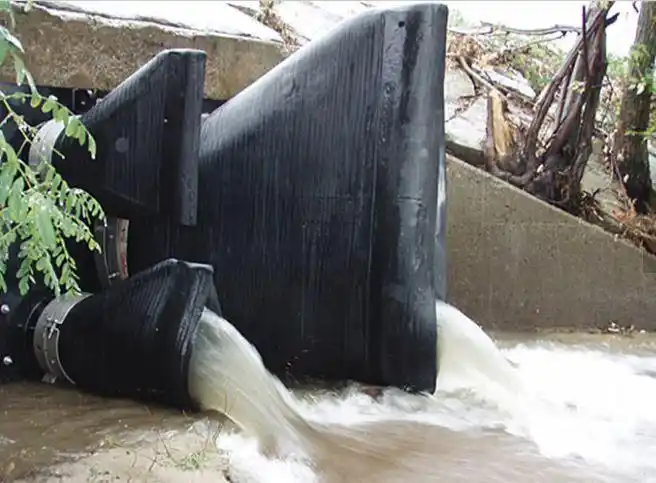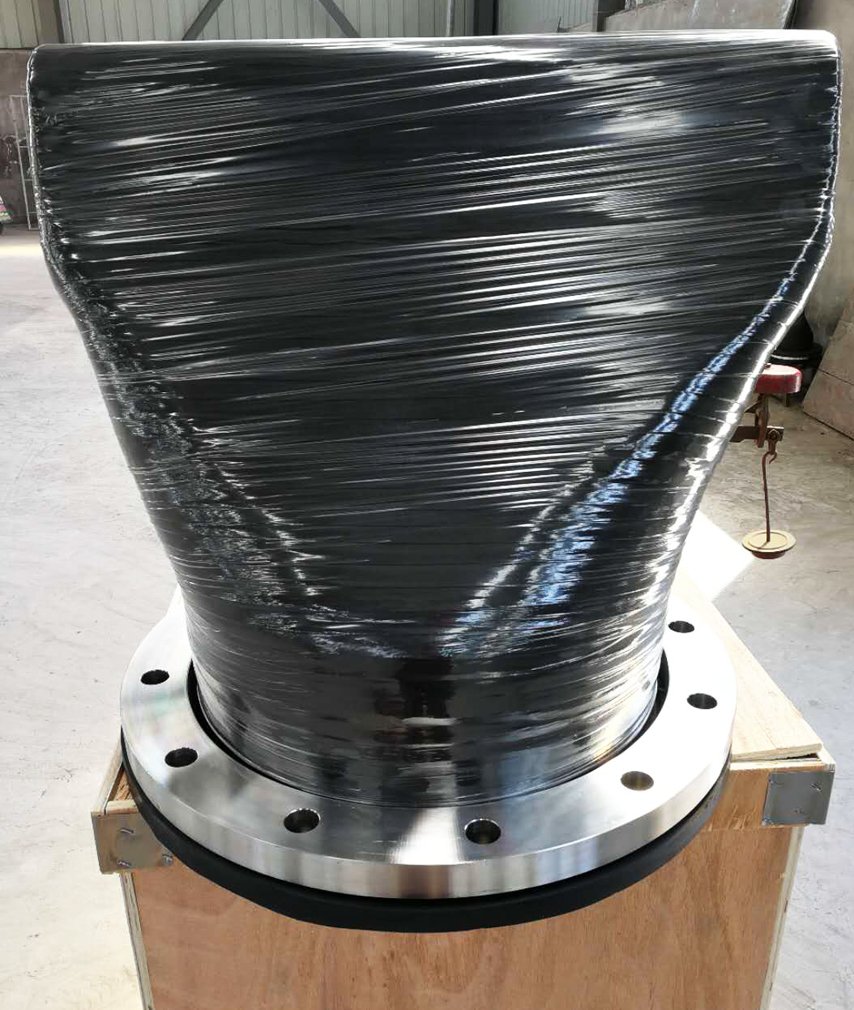What is a duckbill check valve?
Are you tired of mechanical check valves that jam, rust, or fail? These issues lead to dangerous backflow and costly system shutdowns. A duckbill valve offers a simpler, more reliable solution.
A duckbill check valve is a one-piece, flexible rubber valve used for drainage and backflow prevention. Its unique “duckbill” shape opens to allow water to flow out but automatically pinches shut to block anything from flowing back into the pipe.

Now you see how simple the concept is. But the details are what really matter for your project. As a manufacturer, I can tell you that choosing the right size and type is the most critical step. Let’s look at its limitations and, most importantly, the exact information you need before you place an order. This will save you time and money.
How does a duckbill check valve work?
Complex valves often have hinges and seals that can wear out or get stuck. This can lead to a sudden failure right when you need protection the most. The duckbill valve’s design completely eliminates this risk.
It works using differential pressure. When water flows out of the pipe, the pressure pushes the two flexible rubber lips apart. When the flow stops, or if there is any backpressure, the lips are pressed tightly together, forming a reliable seal.

The beauty of this design is its simplicity. There are no moving parts like hinges, shafts, or bearings that can corrode or seize. This makes it virtually maintenance-free. Because the rubber is so flexible, it requires very little pressure (low headloss) to open, which is great for low-flow or gravity-fed systems. Another major benefit is its silent operation. Unlike metal flap valves that can slam shut and cause water hammer in your pipes, the duckbill valve closes quietly and gently. We manufacture these valves in a huge range of sizes, from small DN25 units for small pipes all the way up to massive DN3000 valves for major stormwater outfalls. The core principle remains the same: simple, effective, and silent backflow prevention.
What are the limitations of a duckbill valve?
You might think this simple valve is the perfect solution for everything. But using it in the wrong application can cause big problems. As a responsible manufacturer, I want to make sure you avoid that mistake.
Its biggest limitation is negative pressure, or suction. Since it is made of flexible rubber, a vacuum inside the pipe can cause the duckbill to deform, collapse inward, or fail to seal properly against backflow. It is not designed for suction applications.

This is the most common issue new clients face. They try to install a duckbill valve on the discharge side of a pump, but when the pump creates suction, the valve gets damaged. Think of it like trying to suck the air out of a rubber glove—it just collapses. This is not a product flaw; it is a design characteristic. The valve’s flexibility is its greatest strength for outflow, but its weakness under negative pressure. So, if your system involves pumps that can create a vacuum, a duckbill valve is not the right choice for that specific location. You would need a more rigid valve type, like a ductile iron flap valve or an inline check valve. Understanding this one limitation is key to using duckbill valves successfully. They are perfect for passive drainage and preventing backflow from rivers or tides, but not for direct use in negative pressure environments.
What should I know before buying a duckbill valve?
Ordering the wrong size or type of valve is a costly and frustrating mistake. It leads to project delays and wasted money. Getting the measurements right the first time is crucial for a smooth installation.
Before buying, you must know your connection type and the exact pipe diameter. For flanged valves, you must match the flange standard. For other types, you need the precise outer or inner diameter of your pipe, as the valve is custom-made to fit.

This is the most important information I share with new customers, especially those unfamiliar with the product. There are three main types of duckbill check valves, and each requires a different piece of information from you.
Duckbill Valve Installation Types
| Valve Type |
How It Connects |
Crucial Measurement Needed |
| Flanged |
Bolts directly onto a matching pipe flange. |
Your pipe’s flange standard (e.g., ANSI 150, PN10, AS4087). |
| Slip-on / Clamp-on |
Slips over the end of the pipe and is secured with a clamp. |
The exact Outer Diameter (OD) of your pipe. |
| Slip-in / Insert |
Is inserted into the end of a pipe and expands to seal. |
The exact Inner Diameter (ID) of your pipe. |
For a Flanged type, you must ensure the valve’s flange drilling matches your pipe’s flange. If they don’t match, you cannot bolt them together. For the Slip-on and Slip-in types, we at the factory custom-make the valve to fit your specific pipe dimension. If you give us the wrong Outer Diameter for a slip-on valve, it will either be too loose to seal or too tight to install. The same goes for the Inner Diameter for a slip-in valve. Always double-check your measurements before ordering.
How is a duckbill valve different from a flap valve?
Flap valves and duckbill valves both stop backflow, so it’s easy to get them confused. But they are not interchangeable. Choosing the wrong one can lead to poor performance or even system damage.
The key difference is material and mechanism. A duckbill valve is a flexible, one-piece rubber valve with no moving parts. A flap valve is a rigid door, often metal or plastic, that swings on a hinge. This fundamental difference affects everything.

Let’s break down the practical differences. The duckbill’s flexible rubber design means it is silent and will not slam shut, which prevents the damaging shockwaves known as water hammer. A heavy metal flap valve can slam shut with force. The duckbill also requires very little pressure to open, making it ideal for low-flow drainage systems. A flap valve needs more pressure to push its rigid door open. However, the flap valve’s rigid construction makes it suitable for systems with negative pressure where a duckbill would fail. The biggest advantage of the duckbill is maintenance. With no hinges to break or seize, it is almost a “fit and forget” solution. A flap valve’s hinge is a mechanical failure point that may need service over time.
Duckbill vs. Flap Valve
| Feature |
Duckbill Check Valve |
Flap Valve |
| Mechanism |
Flexible lips open/close |
Rigid door swings on a hinge |
| Material |
Rubber / Elastomer |
Metal / HDPE / Plastic |
| Operation |
Silent, non-slam |
Can slam shut (water hammer risk) |
| Maintenance |
Virtually zero |
Hinge can wear out or seize |
| Best Use |
Low-pressure drainage, outfalls |
Higher pressure, negative pressure |
Conclusion
A duckbill check valve is a simple, maintenance-free solution for backflow prevention. Selecting the right type and providing the correct pipe measurements is the most important step for a successful installation.

 Now you see how simple the concept is. But the details are what really matter for your project. As a manufacturer, I can tell you that choosing the right size and type is the most critical step. Let’s look at its limitations and, most importantly, the exact information you need before you place an order. This will save you time and money.
Now you see how simple the concept is. But the details are what really matter for your project. As a manufacturer, I can tell you that choosing the right size and type is the most critical step. Let’s look at its limitations and, most importantly, the exact information you need before you place an order. This will save you time and money.
 The beauty of this design is its simplicity. There are no moving parts like hinges, shafts, or bearings that can corrode or seize. This makes it virtually maintenance-free. Because the rubber is so flexible, it requires very little pressure (low headloss) to open, which is great for low-flow or gravity-fed systems. Another major benefit is its silent operation. Unlike metal flap valves that can slam shut and cause water hammer in your pipes, the duckbill valve closes quietly and gently. We manufacture these valves in a huge range of sizes, from small DN25 units for small pipes all the way up to massive DN3000 valves for major stormwater outfalls. The core principle remains the same: simple, effective, and silent backflow prevention.
The beauty of this design is its simplicity. There are no moving parts like hinges, shafts, or bearings that can corrode or seize. This makes it virtually maintenance-free. Because the rubber is so flexible, it requires very little pressure (low headloss) to open, which is great for low-flow or gravity-fed systems. Another major benefit is its silent operation. Unlike metal flap valves that can slam shut and cause water hammer in your pipes, the duckbill valve closes quietly and gently. We manufacture these valves in a huge range of sizes, from small DN25 units for small pipes all the way up to massive DN3000 valves for major stormwater outfalls. The core principle remains the same: simple, effective, and silent backflow prevention.
 This is the most common issue new clients face. They try to install a duckbill valve on the discharge side of a pump, but when the pump creates suction, the valve gets damaged. Think of it like trying to suck the air out of a rubber glove—it just collapses. This is not a product flaw; it is a design characteristic. The valve’s flexibility is its greatest strength for outflow, but its weakness under negative pressure. So, if your system involves pumps that can create a vacuum, a duckbill valve is not the right choice for that specific location. You would need a more rigid valve type, like a ductile iron flap valve or an inline check valve. Understanding this one limitation is key to using duckbill valves successfully. They are perfect for passive drainage and preventing backflow from rivers or tides, but not for direct use in negative pressure environments.
This is the most common issue new clients face. They try to install a duckbill valve on the discharge side of a pump, but when the pump creates suction, the valve gets damaged. Think of it like trying to suck the air out of a rubber glove—it just collapses. This is not a product flaw; it is a design characteristic. The valve’s flexibility is its greatest strength for outflow, but its weakness under negative pressure. So, if your system involves pumps that can create a vacuum, a duckbill valve is not the right choice for that specific location. You would need a more rigid valve type, like a ductile iron flap valve or an inline check valve. Understanding this one limitation is key to using duckbill valves successfully. They are perfect for passive drainage and preventing backflow from rivers or tides, but not for direct use in negative pressure environments.
 This is the most important information I share with new customers, especially those unfamiliar with the product. There are three main types of duckbill check valves, and each requires a different piece of information from you.
This is the most important information I share with new customers, especially those unfamiliar with the product. There are three main types of duckbill check valves, and each requires a different piece of information from you.
